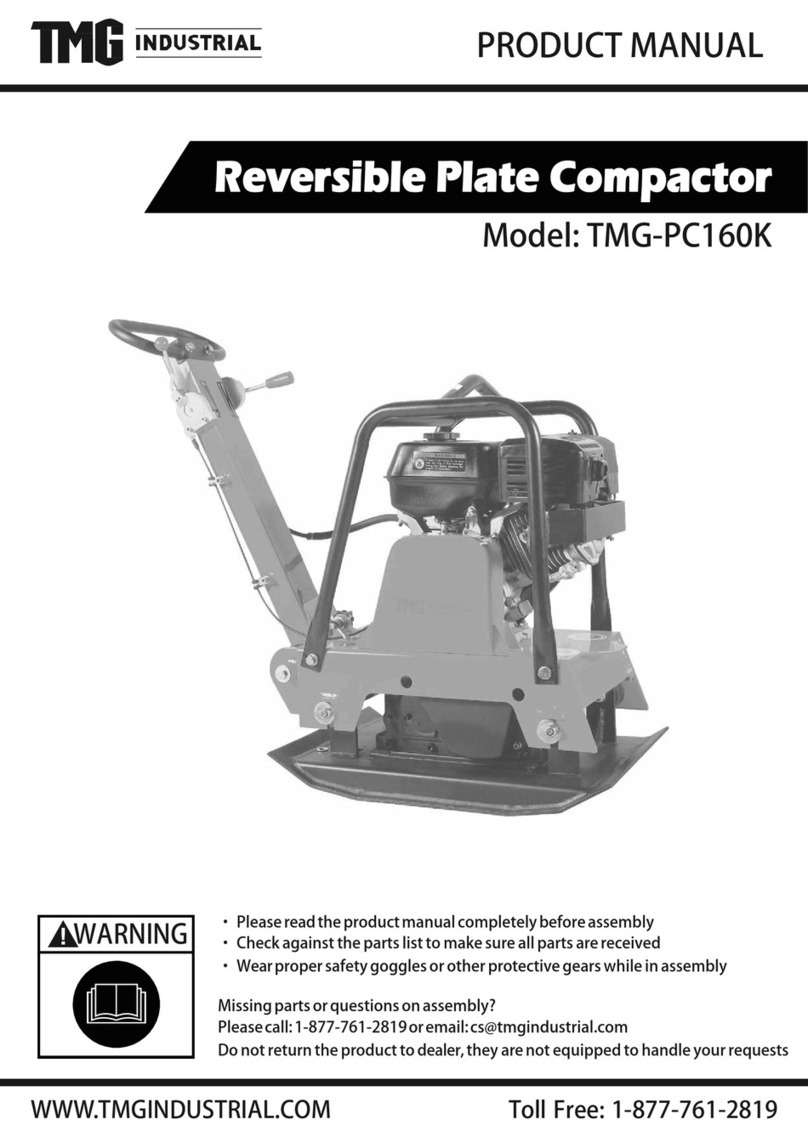
6
Maintenance and repair work
Only use original Weber spare parts to ensure reliable and safe operation for maintenance
or repair work.
Adjusting tasks, maintenance tasks, and inspection tasks must be carried out on schedule as
specied in this operating and maintenance manual. These activities should only be executed
by instructed personnel.
For repair, maintenance, or inspection work the engine of the tamper must be safeguarded against
unintentional starting.
All pressurized lines, particularly hydraulic lines and lines of the injection system of the drive motor
must be depressurized before performing maintenance or repair tasks.
For maintenance and repair tasks the tamper must be placed on a level and stable substrate and
must be secured from rolling off or tipping over.
Heavy components and assemblies must be secured to and lifted by hoisting machines that can
bear their weight when they are replaced. Ensure that no hazard is caused by raising components
or assemblies.
Do not position yourself or work under suspended loads.
Operation under difcult conditions
Never inhale the exhaust gas; it contains carbon monoxide, a colorless and odorless gas that
is extremely hazardous, which, if inhaled even briey, can cause unconsciousness and death.
Therefore, never operate the engines in enclosed areas or in areas that are poorly ventilated
(tunnels, caves, etc.). Exercise particular caution when operating the engine in the vicinity of
people and livestock.
Operation
Prior to starting work the owner of the tamper must be familiar with the work environment. The work
environment includes obstacles in the work and trafc area, the bearing capacity of the ground,
as well as the necessary safeguarding of the construction site in the area adjacent to public trafc;
and it includes compliance with trafc regulations.
The tamper should only be operated when the protective xtures are mounted. The protective xtures
must all be in functional condition.
At least once per shift the tamper must be checked for apparent defects. If there are apparent defects
then operation of the tamper must be stopped immediately and the responsible person must be
informed. Prior to restarting, tamper malfunctions that have occurred must be corrected.
If lubricating oils and fuel come into contact with skin, they can cause skin cancer. Upon contact
with the skin, clean affected skin with suitable cleaning agent without delay.
Repair work on the Honda gasoline engine may only be performed by personnel who have been
instructed and trained by Honda or authorized by Weber. Repairs carried out by personnel who
have not been given training and instructions will void any warranty.



























